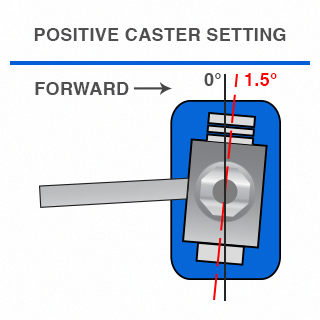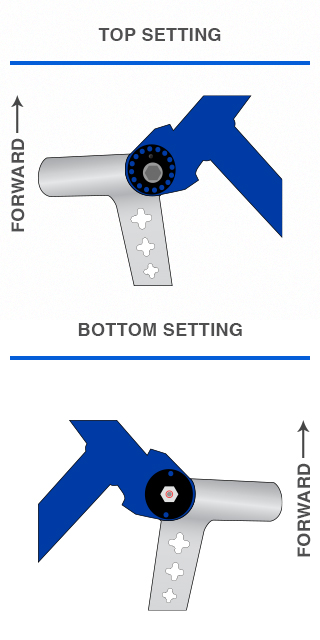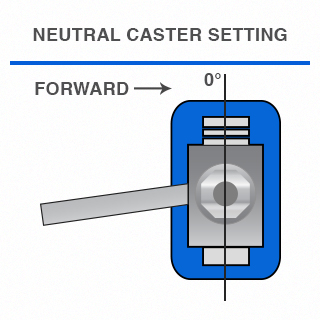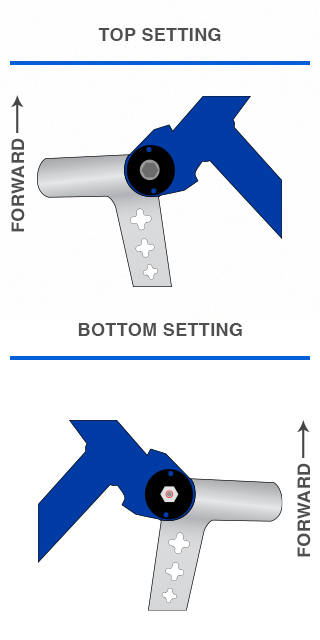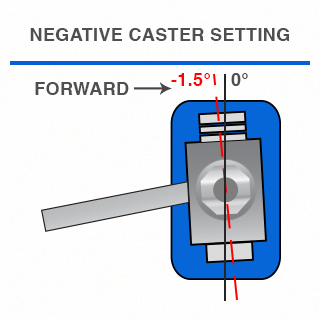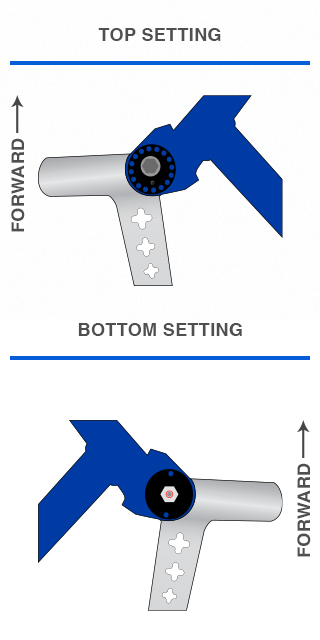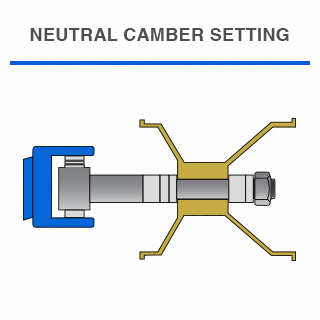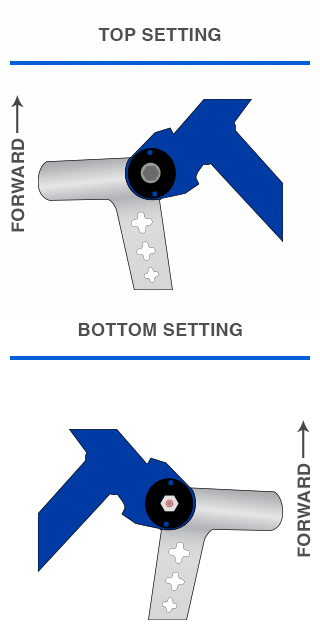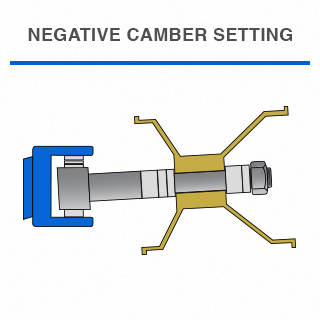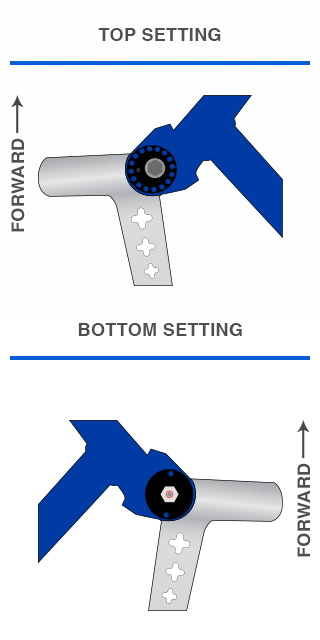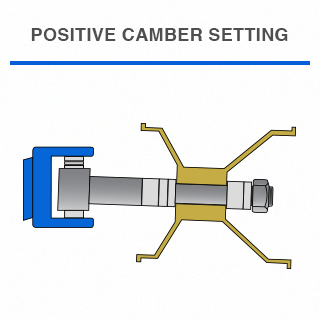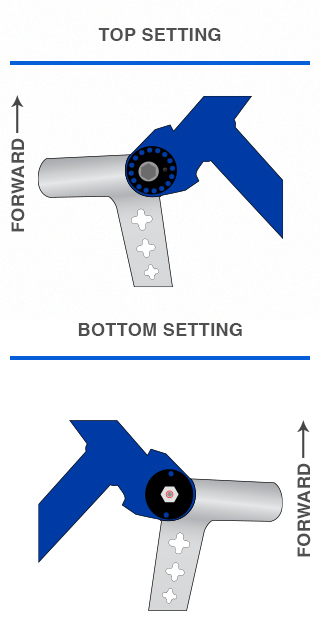- 317-870-3122
- info@topkartusa.net
- Mon - Thu: 9:00am - 5:00pm | Fri: 9:00am - 4:00pm
The Top Kart chassis come standard with optional top 1.5° eccentric pills in the chassis for front end caster/camber adjustment. Below are some illustrations of the standard settings, and adjustable settings for the eccectric pills and also the reasons for adjusting each way.
